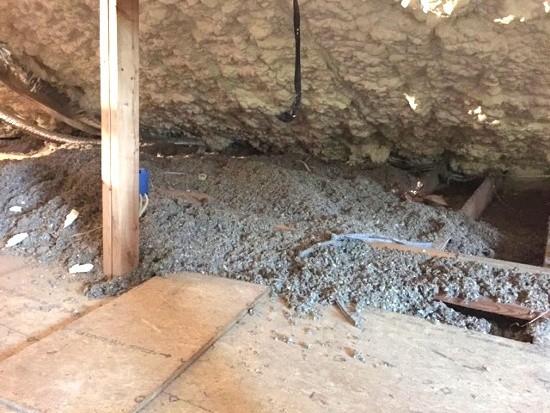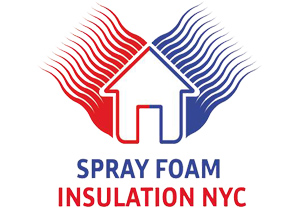Why Remove Attic Floor Insulation in a Spray Foam Attic
I get asked a lot of questions about spray foam. Do I need an ignition barrier? Should I use open cell or closed cell spray foam? Will open cell spray foam really rot my roof? But the question I get more than any other on this topic is about whether or not the insulation on the attic floor should be removed when insulating the roof deck in an existing home. As you can tell from the title of this article, my answer is to remove it. Here are my three reasons, in increasing order of importance.
1. To prevent moisture problems
Think about temperature. Think about dew point. If you leave the insulation in the attic floor after insulating the roofline, the attic will be cooler in winter than if you remove the insulation.But a common reason to put Spray Foam on the roofline is to avoid having to air-seal the attic floor. Thus, the air in the attic is connected with the air in the house. That means it's more humid than outdoor air and more humid than vented attic air. Cold air is dry air, you know.
But now the attic isn't vented to outdoors. The attic is much warmer than outdoors in winter but significantly cooler than the living space if you leave the old insulation in the attic floor. That makes the surface of the Spray Foam cooler, possibly even below the dew point.
Removing the attic floor insulation will solve this problem. It is not, however, the first solution. As Dr. Joe Lstiburek says, we shouldn't be calling these things sealed attics or unvented attics. We need to think of them as conditioned attics. Once you deal with the air up there, this problem goes away, with or without the insulation in the attic floor.
2. To get a better air seal
Spray foam insulation is an incomplete name. It really should be called spray foam insulation and air barrier. A properly done Spray Foam job not only insulates but also greatly reduces the air leakage of a home.But that only works if the installer can get it into the places where most of the air leakage happens. In an attic, the eaves are one of the most critical places to get good coverage with the foam.
If you leave the existing insulation in the attic, it interferes with the foam installation. Yeah, if you do a really good job raking the insulation back, you can still do a good job with the foam. But it's harder and the chances of success are lower. I know. I've done blower door tests on homes where they left the old insulation and the leaks were at the those transitions where the old insulation got in the way. The photo below is one of the homes I tested where the installer didn't get it sealed up.
Attic Floor Insulation in a Spray Foam Attic

3. To reduce odors and improve indoor air quality
If those first two don't have you convinced, consider this. That old insulation is full of dust, debris, leaves used by that mouse that had a nest up there, rat poop, bat guano, the remains of a dead squirrel, remnants of rat poison that someone put up there ten years ago to kill that squirrel, some teenager's forgotten drug stash, and possibly even a severed human ear. Those are just a few of the things I've found in attics.Just kidding! I haven't really found all those things in attics...yet. But those things and more could be hiding in the old insulation in your attic.
When the attic was vented to the outdoors, all that nasty stuff wasn't so connected with the living space in your home. Yeah, you probably still breathed some of it, but not as much as you will now with Spray Foam on the roof deck. By encapsulating the attic and leaving the old insulation up there, that filth is in your conditioned space. You may have odor problems. Your indoor air quality may get worse.
Other considerations
Another potential reason to remove the old insulation is that it might be required. Some energy efficiency programs help you pay for the cost of Spray Foam in the attic but require removal of the old insulation. Georgia Power's home energy improvement program for existing homes does this.
Will you have problems if you don't remove the old insulation? Maybe. Maybe not. I know of homes where they left the old insulation in place and everything seems to be OK. Usually that happens in homes that are still pretty leaky even after sealing the attic.
I've been called in to look at other homes, however, where the old insulation led to odor problems. In my opinion, removing the old insulation should be as much a part of putting spray foam insulation on your roof deck as making sure you have whole-house ventilation and conditioning the air in the attic.
